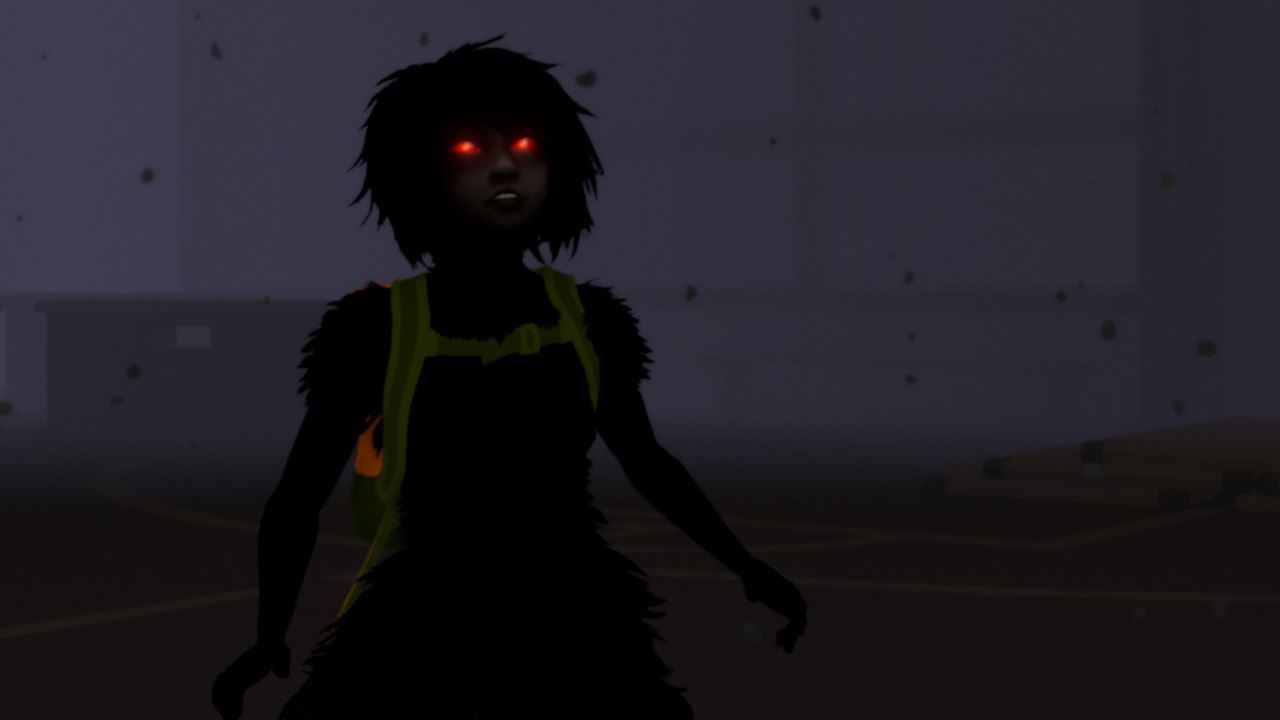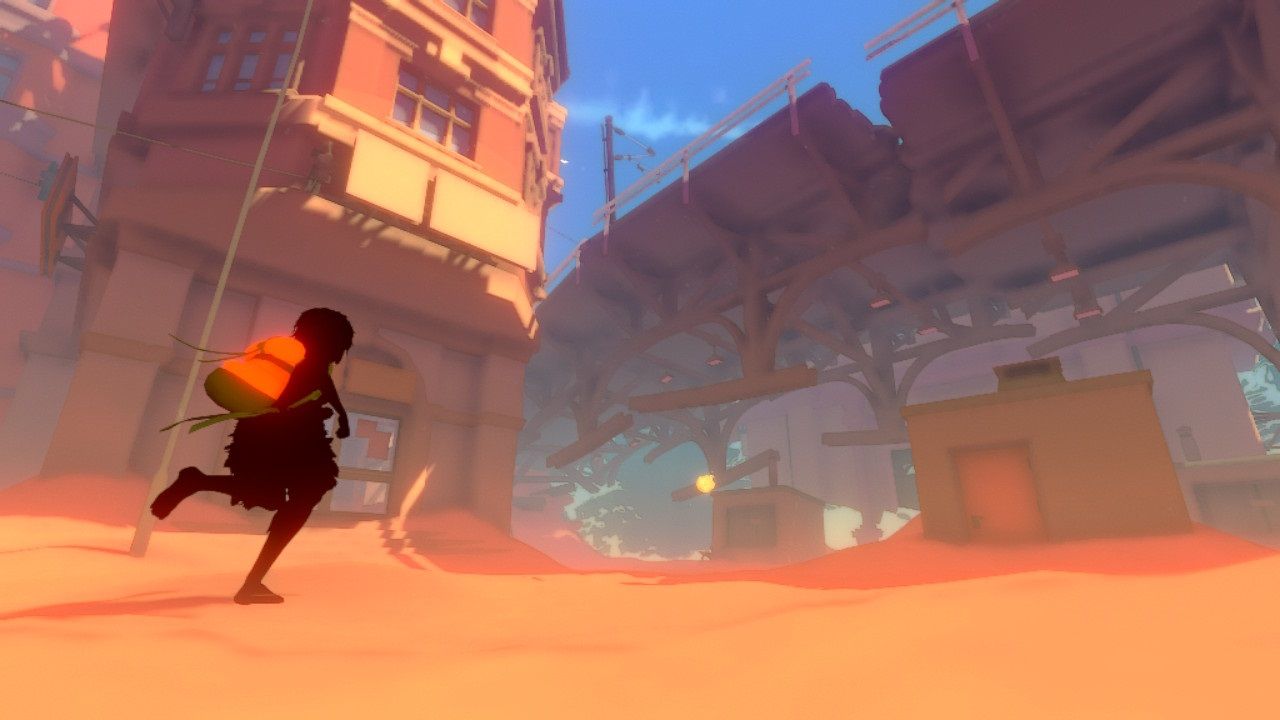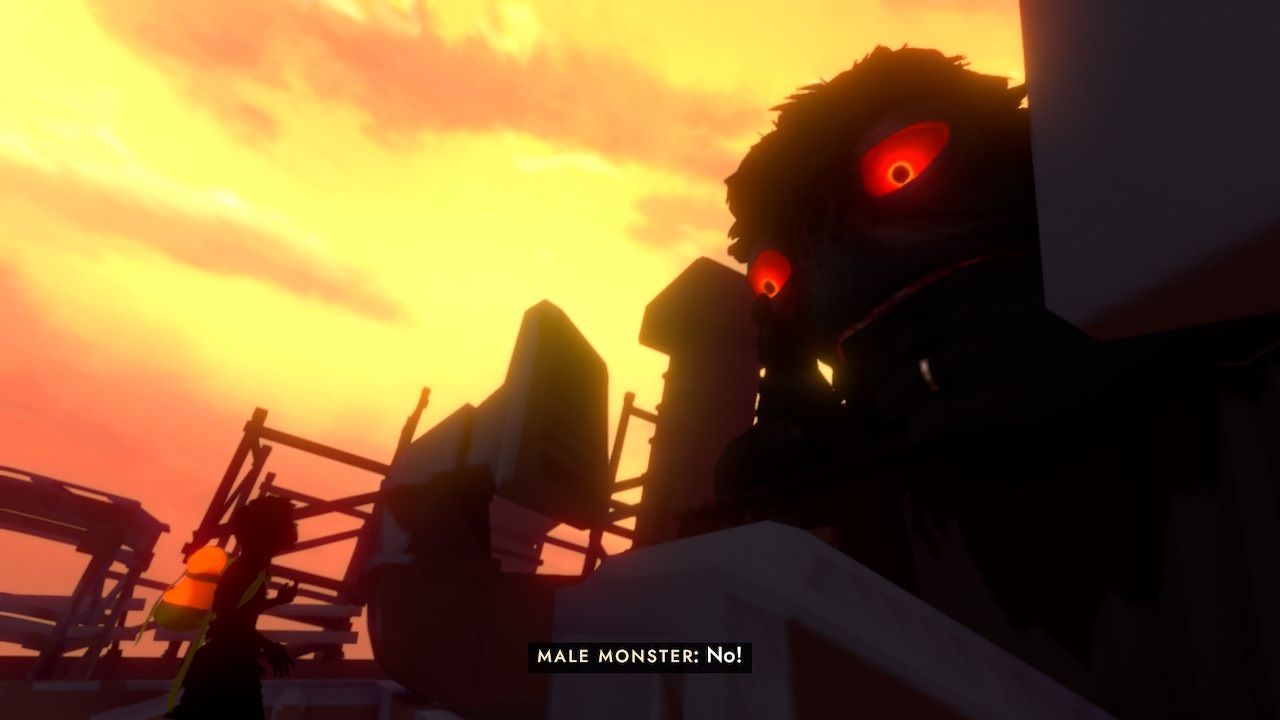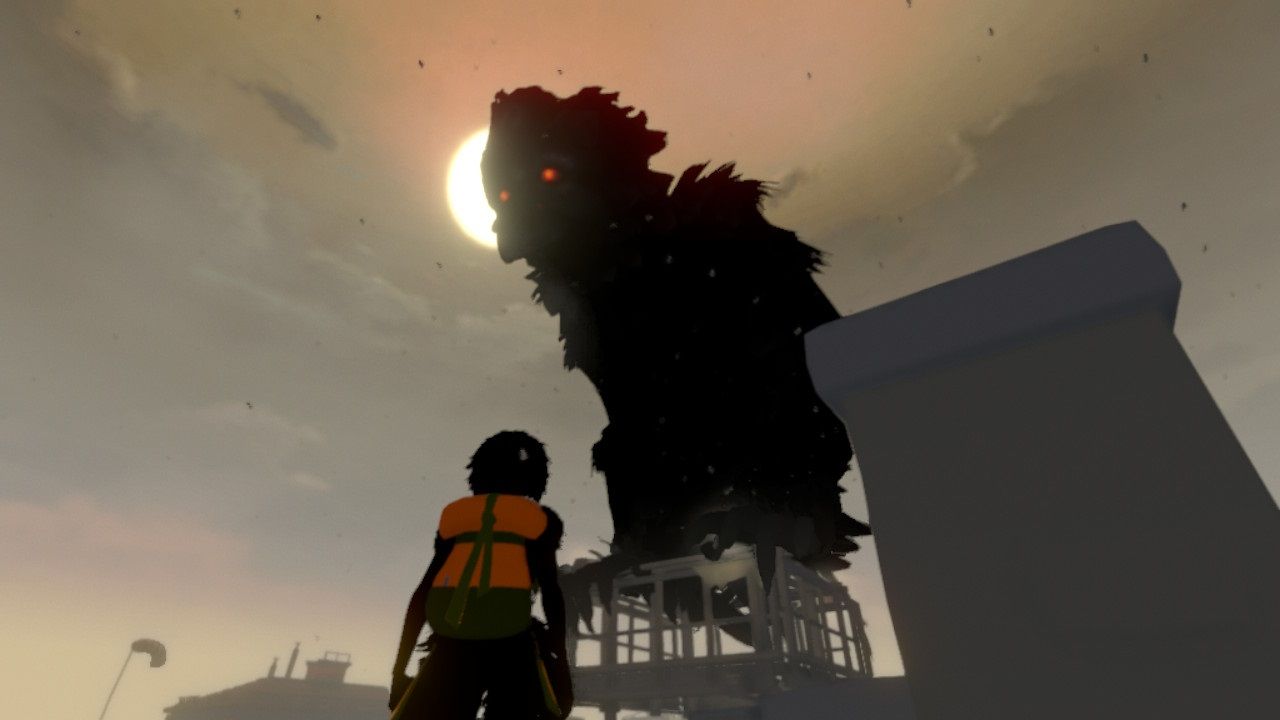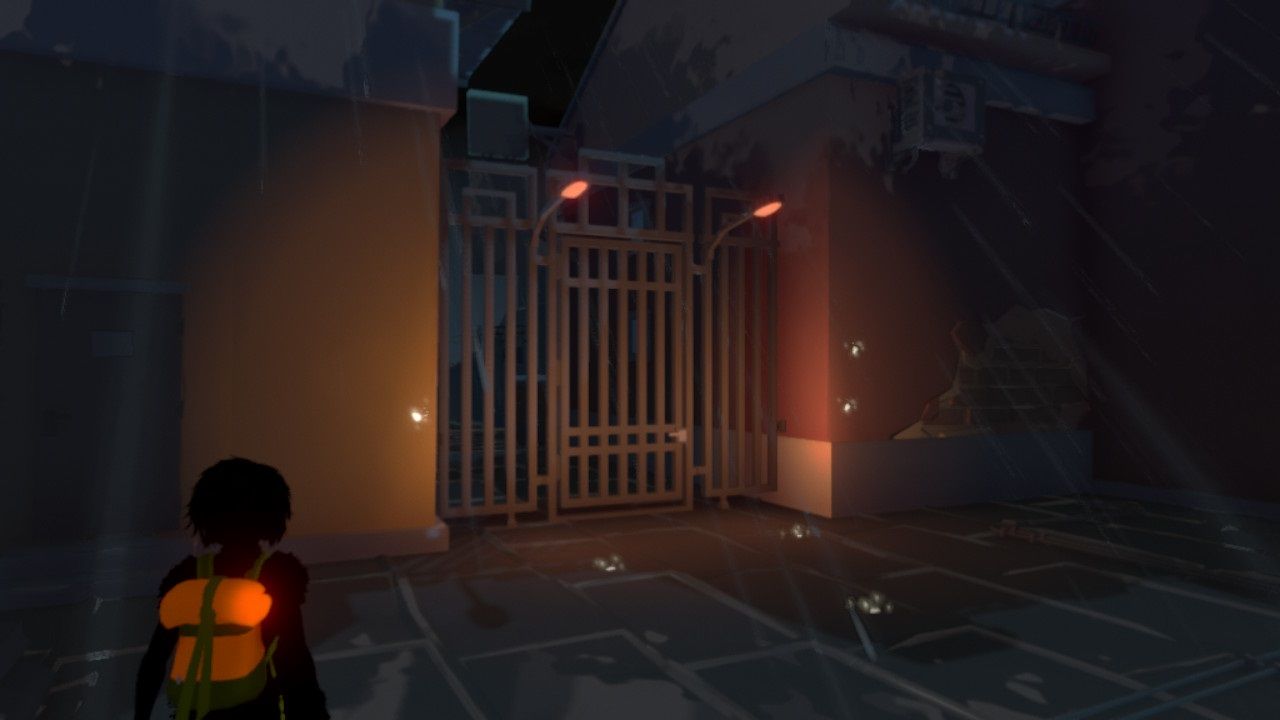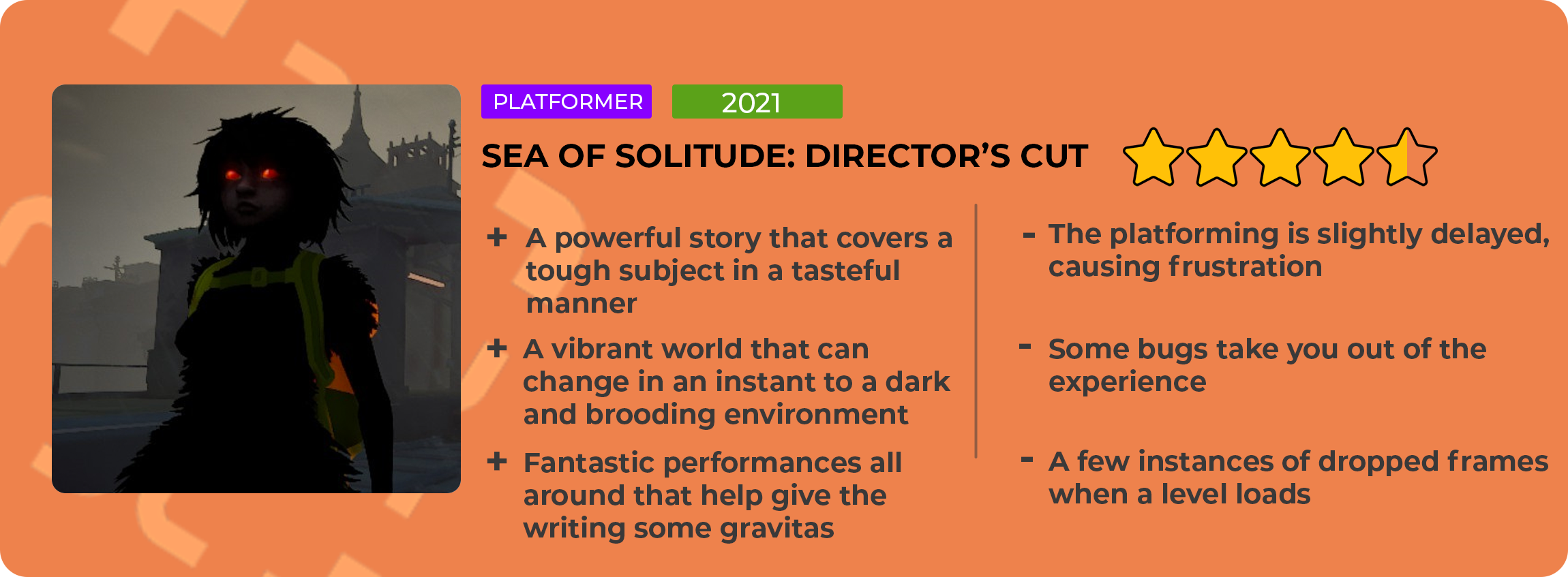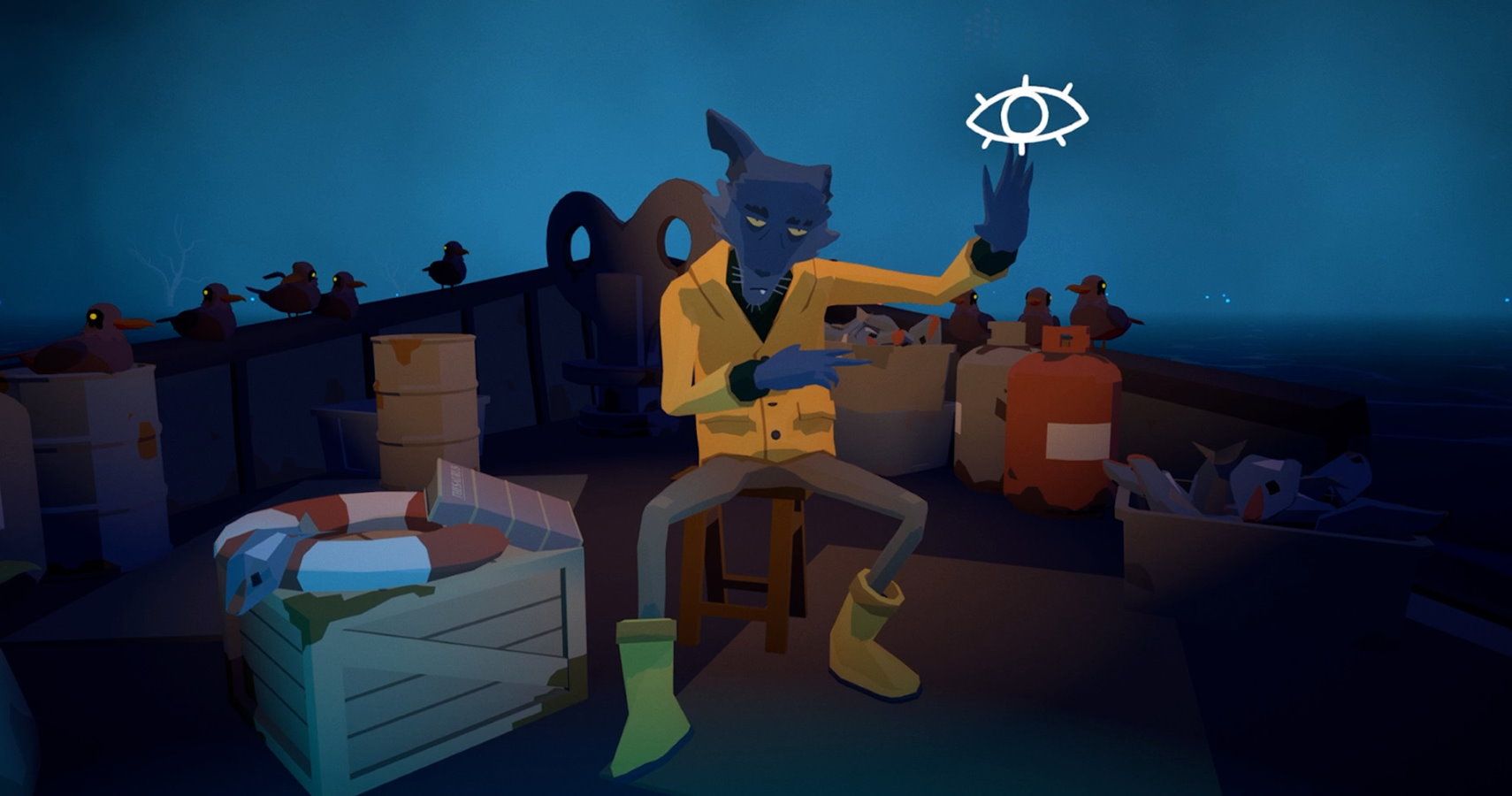Depression is a hard topic to get right in video games. The sorrow, the pain, that harrowing feeling of being closed off from the rest of the world, it’s all portrayed impeccably in Sea of Solitude: Director’s Cut, and this game truly made me reflect on my own feelings during a stressful time.
I too have felt isolated from the world, especially during the COVID-19 pandemic. I’ve intentionally cut myself off from others and have suffered from depression first-hand, and one of the characters in the game especially deals with those issues. I also have and still struggle to comprehend if I’m good enough for the outside world.
However, like this game’s protagonist Kay, I went through a journey of self-discovery, trying to push back the doubt. From first-hand experience, it’s honestly tough to face and try to break through your comfort zone. Sea of Solitude: Director’s Cut portrays this affliction perfectly, and has an uplifting, albeit tumultuous journey in store for you.
Through this experiential journey, you’re platforming across a semi-linear open world. The character Kay runs through the area finding corrupted parts of the map and then moves forward through the story as she fights back against her self-doubt. However, this isn’t a fast-paced platformer like Mario or Crash; it’s in the vein of Ico where movements are exaggerated.
Unfortunately, whenever you jump, there’s a slight delay on the Switch from the button press to the movement, which can be frustrating. What makes it worse is that there are a few instances where Kay t-poses when colliding with a wall. I also had some difficulties getting into the boat more often than not, as the A button didn’t initiate the animation unless I backed away and tried again. Issues like this took me out of the immersive experience that developer Jo-Mei is trying to tell.
The puzzles in Sea of Solitude are presented well. They’re not particularly challenging, but they’re a creative storytelling tool. For example, Kay carries an ice shard of a loved one’s face as she’s maneuvering around her inner ghosts and trying to find the right direction towards the solution.
Despite my gripes with the platforming, I loved exploring the imaginative world that Creative Director Cornelia Geppert and her team created. It’s a treat to explore a beach town that’s been sunken by the water, and with the Director’s Cut Photo Mode, you can take however many pictures you’d like with this stunning setting. The bright and vibrant aesthetic of Sea of Solitude instantly turns into a barren nightmare as Kay faces hardships on her journey. It’s impressive how the weather suddenly shifts as rain pours down onto our protagonist and choppy waves hit her boat.
Furthermore, dramatic scenes between characters are heightened by the scenery and overall scale. For example, going through a horrific school setting with bullies that are depicted as monsters is quite a frightening scene. Monsters that reflect each character are also grand in size, bringing a certain gravitas to the level and the scenes they occupy. Witnessing a huge bird perched on a building far away gives a daunting effect as you get closer to the animal. The sense of tension is increased even further as a monster underneath the water is hoping to gobble you up. The cutscene in which it’s successful is fittingly dark with its crunching noises and stirring animation.
For the Director’s Cut, the game received a new script and voice actors, and the result is superb. I never played the original (you can read our review of the first version here), so I can’t compare the two versions, but in the Director’s Cut, the performances by the voice actors are amazing. You can truly feel the pain in the delivery or complete joy whenever characters reunite once more. Their conversations are believable, and for a game about depression and separation, they absolutely nailed it.
The story with Kay’s boyfriend, in particular, had my eyes welling up as at first, he seems like a warm person to Kay, but as the layers unfold, we find out he’s a sufferer of depression. The performances from the couple’s respective actors in a matter of 30 or so minutes of gameplay sold the tension between them, the hurt that the boyfriend was going through, and how depression can take away your interest in people one step at a time, creating a sense of hopelessness and that feeling of being alone. There are multiple moments in Sea of Solitude, in which I could feel the humanity behind the fictional characters and their monstrous visage.
Let’s not forget about the writing behind those performances. Sea of Solitude tackles some tough themes and the game gracefully and honestly covers them in a beautiful, yet stirring way. Throughout the journey, Kay is struggling with her relationships as she realizes the mistakes she has made in the past. She is justifying what she has done, but there are constant hurdles that prevent her from moving forward. That feeling of resentment or anguish within Kay is also represented in short lines of dialogue from the monsters surrounding her. They’re repetitive, but they show a character flaw within Kay as she constantly gets hung up on things and doubts herself.
What brings it all together is the wonderful soundtrack that succeeds at delivering those emotional threads that the story and the game requires. A few chills went down my spine as I heard the striking music.
This is a Nintendo Switch exclusive release, and you can tell that the development team took some liberties here and there to make Sea of Solitude run on the platform. Some of the textures, especially towards the ending, look rough, and the game has a lag spike whenever you enter a new area.
However, for what it is, this is an impressive display of what you can do on the hybrid system. Most of the time, the game has a smooth frame rate, and the environments look gorgeous around Kay. The animations of the characters, especially in the eyes, really emote how they’re feeling, and the character model of Kay looks superb for what the Switch can handle. It’s especially great when she reacts to the environment, like freaking out whenever a lightning strike occurs nearby. The Switch can also dish out some impressive-looking giant set pieces that will stay in my memory for months.
In addition, Sea of Solitude: Director’s Cut takes advantage of the HD Rumble functionality from the Nintendo Switch. I was immediately sucked in during the thunderstorm section as you could feel each strike from the left and the right. Whenever Kay hit a wall, you’d feel a matching tension in the Joy-Con. This, paired with the amazing sound design, is a memorable experience. After playing a game with the DualSense on the PS5, I thought the Joycon wouldn’t impress me anymore, but it has indeed done so with Sea of Solitude.
Overall, Sea of Solitude: Director’s Cut will be an indie game I’ll remember for years to come, just like Celeste and What Remains of Edith Finch. Its powerful storytelling, excellent performances, and stunning world will eventually invite me back to play it once again.
A Switch copy of Sea of Solitude: Director’s Cut was provided to TheGamer for this review. Sea of Solitude: Director’s Cut is available now, exclusively on Nintendo Switch.
Next: Whatever Tomb Raider’s Future, It Needs To Have Sam In It
- Game Reviews
- Sea Of Solitude
The British “Canadian” Chris Penwell has been a video game journalist since 2013 and now has a Bachelor’s degree in Communications from MacEwan University. He loves to play JRPGs and games with a narrative. You can check out his podcasts Active Quest every Tuesday and Go Beyond: A My Hero Academia Podcast on Wednesdays.
Source: Read Full Article
